Discover 35 hidden attractions, cool sights, and unusual things to do in Turin (Italy). Don't miss out on these must-see attractions: Royal Palace of Turin, National Museum of Cinema, and Mole Antonelliana. Also, be sure to include Residences of the Royal House of Savoy in your itinerary.
Below, you can find the list of the most amazing places you should visit in Turin (Piedmont).
Table of Contents
Royal Palace of Turin
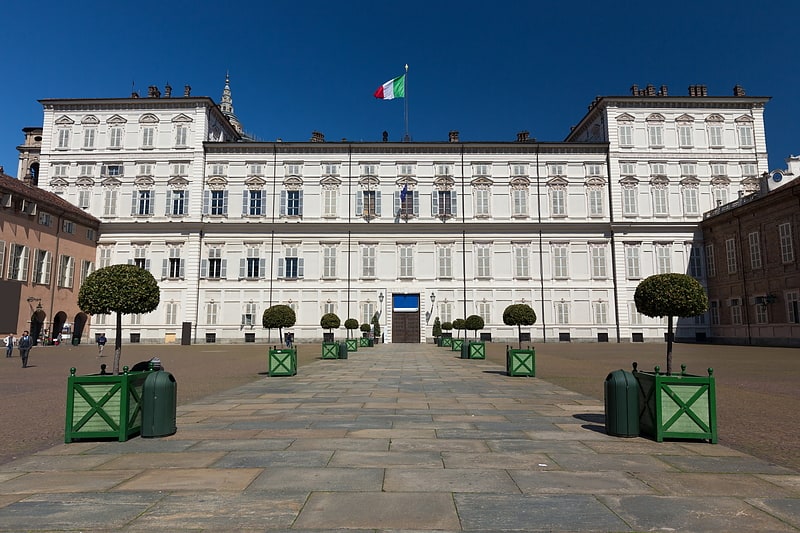
Also known as: Palazzo Reale
Royal residence with armory and museum. The Royal Palace of Turin is a historic palace of the House of Savoy in the city of Turin in Northern Italy. It was originally built in the 16th century and was later modernized by Christine Marie of France in the 17th century, with designs by the Baroque architect Filippo Juvarra. The palace also includes the Palazzo Chiablese and the Chapel of the Holy Shroud, the latter of which was built to house the famous Shroud of Turin. In 1946, the building became the property of the state and was turned into a museum. In 1997, it was placed on the UNESCO World Heritage Site list along with 13 other residences of the House of Savoy.[1]
Address: Turin, Piazzetta Reale 1
National Museum of Cinema
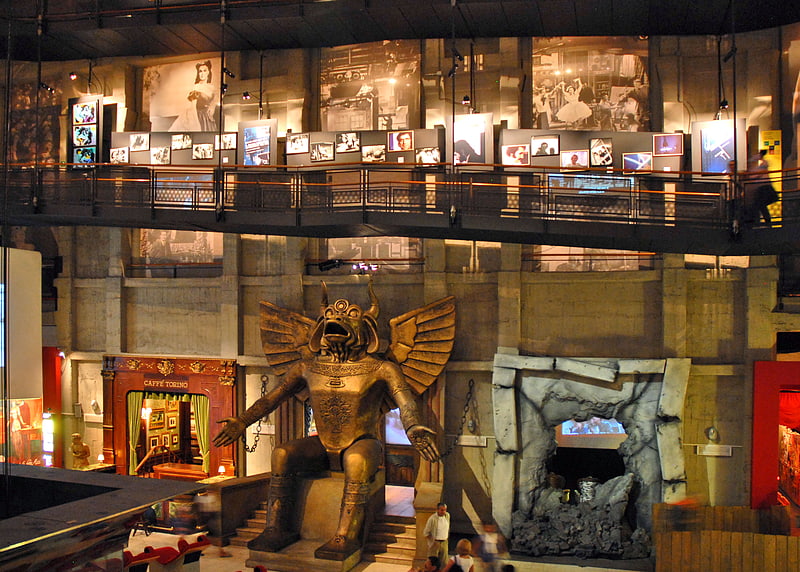
Also known as: Museo nazionale del cinema
Cinema museum in a landmark tower. The National Museum of Cinema located in Turin, Italy, is a motion picture museum fitted out inside the Mole Antonelliana tower. It is operated by the Maria Adriana Prolo Foundation, and the core of its collection is the result of the work of the historian and collector Maria Adriana Prolo. It was housed in the Palazzo Chiablese.
In 2008, with 532,196 visitors, it reached the thirteenth place among the most visited Italian museums.[2]
Address: Via Montebello, 20/A, 10124 Torino (Circoscrizione 1)
Mole Antonelliana
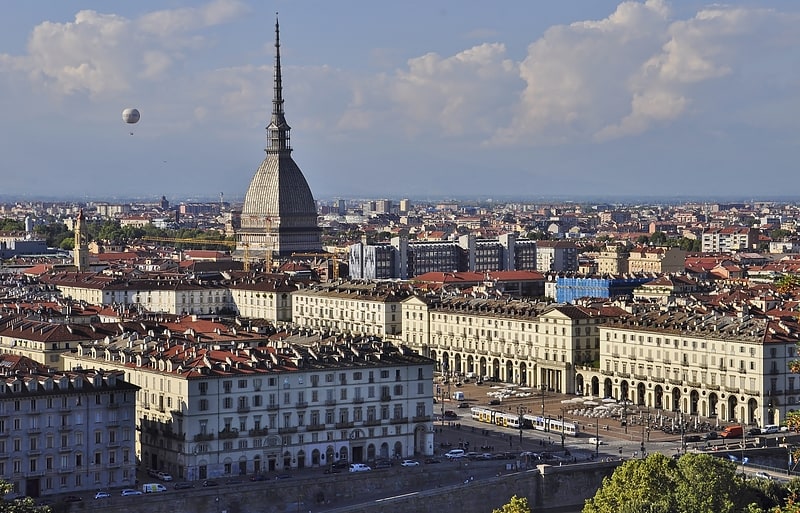
Prominent landmark with cinema museum. The Mole Antonelliana is a major landmark building in Turin, Italy, named after its architect, Alessandro Antonelli. A mole in Italian is a building of monumental proportions.
Construction began in 1863, soon after Italian unification, and was completed in 1889, after the architect's death. Originally conceived of as a synagogue, it now houses the National Museum of Cinema, and is believed to be the tallest museum in the world. A representation of the building is featured on the obverse of the Italian 2 euro cent coin. Catalan vaults are featured in the ceiling of the ground floor under the atrium, which are relatively rare in Italy but popular in Spain, where they originated.[3]
Address: Via Montebello 20, 10124 Turin (Circoscrizione 1)
Residences of the Royal House of Savoy
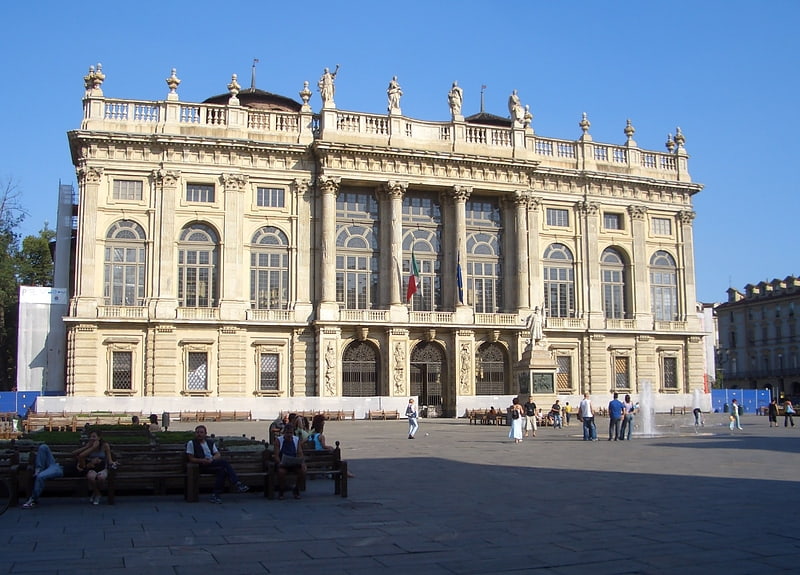
Also known as: Residenze sabaude in Piemonte
The Residences of the Royal House of Savoy are a group of buildings in Turin and the Metropolitan City of Turin, in Piedmont. It was added to the UNESCO World Heritage Sites list in 1997.[4]
Museo Egizio
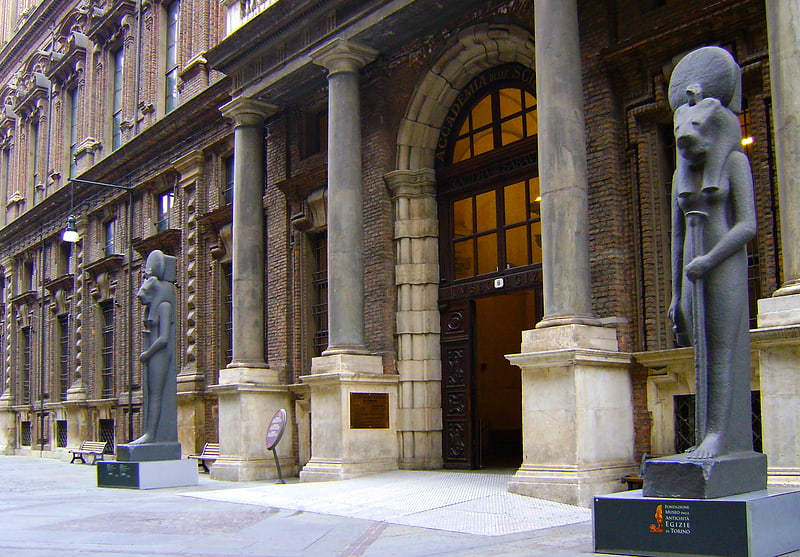
Also known as: Museo egizio
Museum in Turin, Italy. The Museo Egizio is an archaeological museum in Turin, Piedmont, Italy, specializing in Egyptian archaeology and anthropology. It houses one of the largest collections of Egyptian antiquities, with more than 30,000 artifacts, and is considered the second most important Egyptology collection after the Egyptian Museum of Cairo. In 2019, it received 853,320 visitors, making it the one of the most visited museums in Italy.[5]
Address: Via Accademia delle Scienze, 6, 10123 Torino (Circoscrizione 1)
Reggia
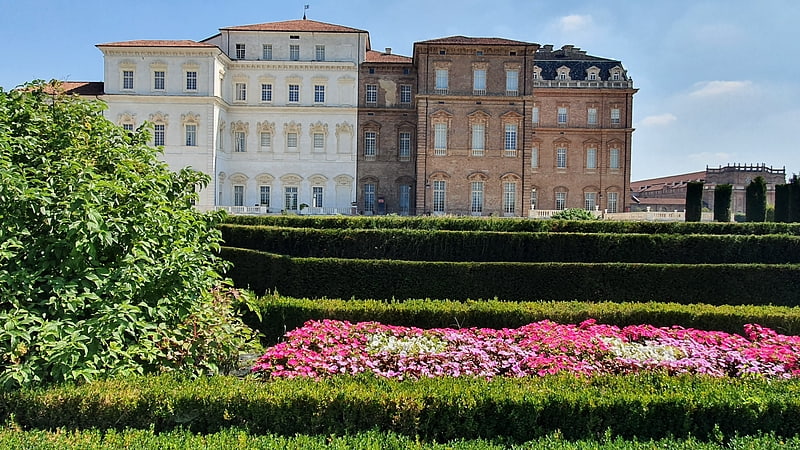
Vast restored palace and garden complex. The Palace of Venaria is a former royal residence and gardens located in Venaria Reale, near Turin in the Piedmont region in northern Italy. It is one of the Residences of the Royal House of Savoy, included in the UNESCO Heritage List in 1997.
The Palace was designed and built from 1675 by Amedeo di Castellamonte, commissioned by duke Charles Emmanuel II, who needed a base for his hunting expeditions in the heathy hill country north of Turin. The name itself derives from Latin, Venatio Regia meaning "Royal Hunt". It was enlarged to become a luxurious residence for the House of Savoy. The palace complex became a masterpiece of Baroque architecture and was filled with decoration and artwork. It fell into disuse at the end of the 18th century. After the Napoleonic wars, it was used for military purposes until 1978, when its renovation began, leading to the largest restoration project in European history. It opened to the public on October 13, 2007, and it has since become a major tourist attraction and exhibition space.
It is noted for its monumental architecture and Baroque interiors by Filippo Juvarra, including the Galleria Grande and its marble decorations, the chapel of Saint Uberto, and its extensive gardens. It received 1,048,857 visitors in 2017, making it the sixth most visited museum in Italy.[6]
Address: Piazza della Repubblica 4, 10078 Venaria Reale
Palazzo Madama
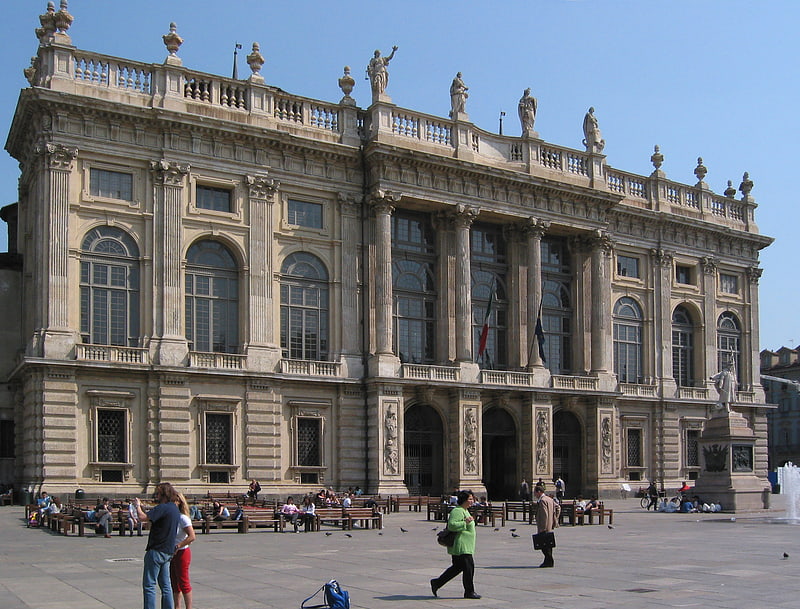
Grand museum with antique and applied arts. Palazzo Madama e Casaforte degli Acaja is a palace in Turin, Piedmont. It was the first Senate of the Kingdom of Italy, and takes its traditional name from the embellishments it received under two queens of the House of Savoy.[7]
Address: Piazza Castello, 10122 Torino (Circoscrizione 1)
Cathedral of Superga
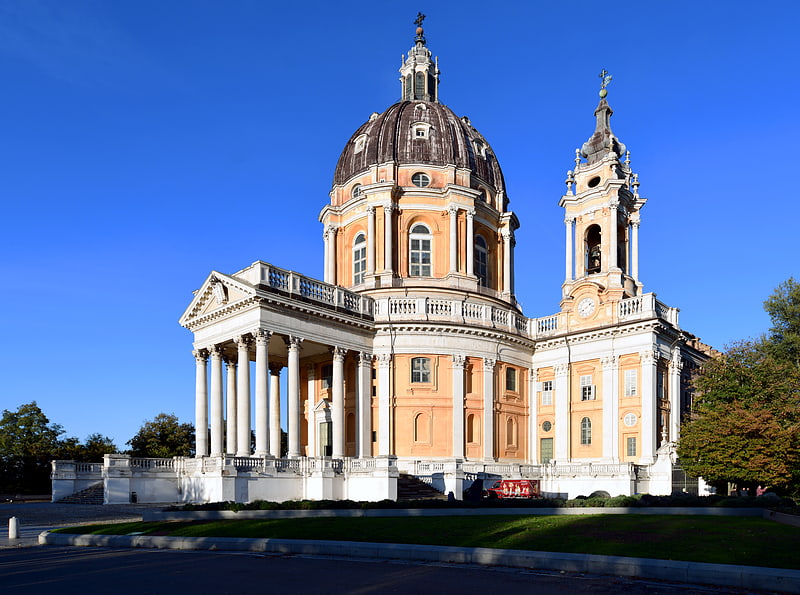
Also known as: Basilica di Superga
1700s hilltop church overlooking Alps. The Basilica of Superga is a church in Superga, in the vicinity of Turin.[8]
Address: Strada Comunale alla Basilica di Superga, 73, 10132 Superga (Circoscrizione 7)
Palazzina di caccia di Stupinigi
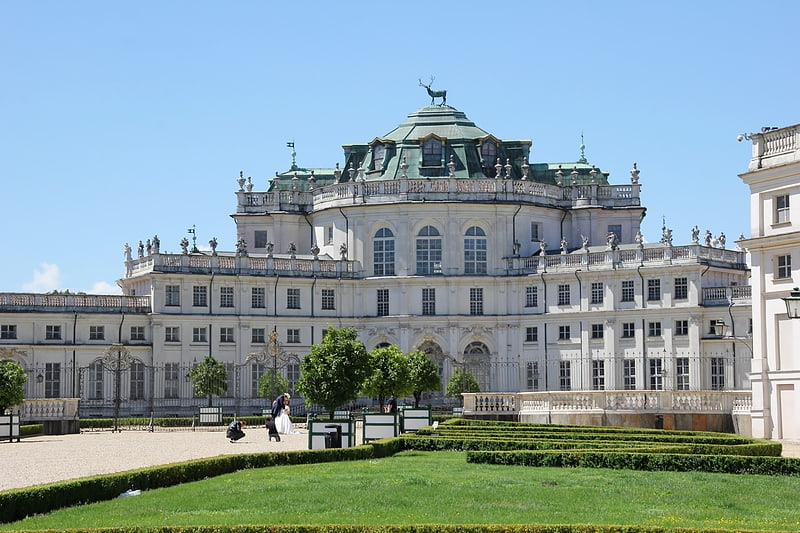
Renovated rococo hunting palace. The Palazzina di caccia of Stupinigi is one of the Residences of the Royal House of Savoy in northern Italy, part of the UNESCO World Heritage Sites list. Built as a royal hunting lodge in the early 18th century, it is located in Stupinigi, a suburb of the town of Nichelino, 10 km southwest of Turin.[9]
Address: Piazza Principe Amedeo 7, 10042 Stupinigi
Villa della Regina
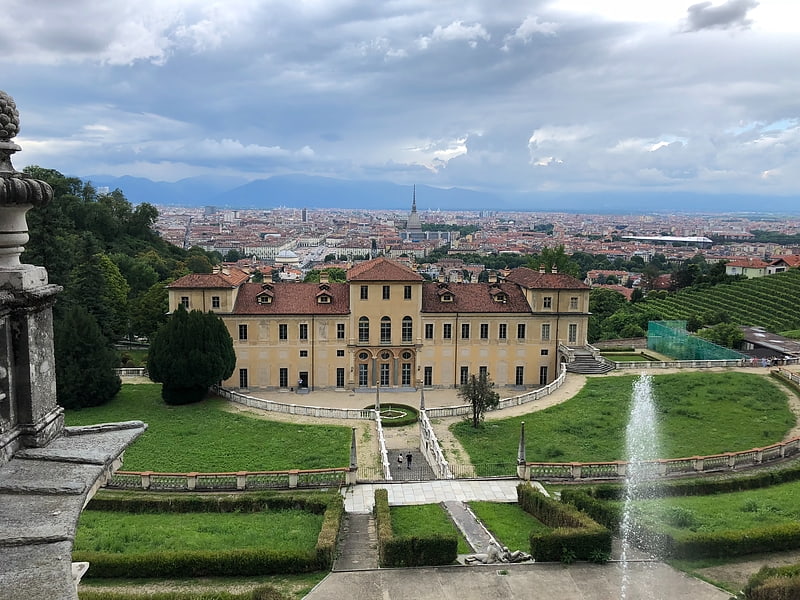
17th-century palace and gardens. The Villa della Regina is a palace in the city of Turin, Piedmont, Italy. It was originally built by the House of Savoy in the 17th century.[10]
Address: Strada Santa Margherita 79, 10131 Turin (Circoscrizione 8)
Palazzo Carignano
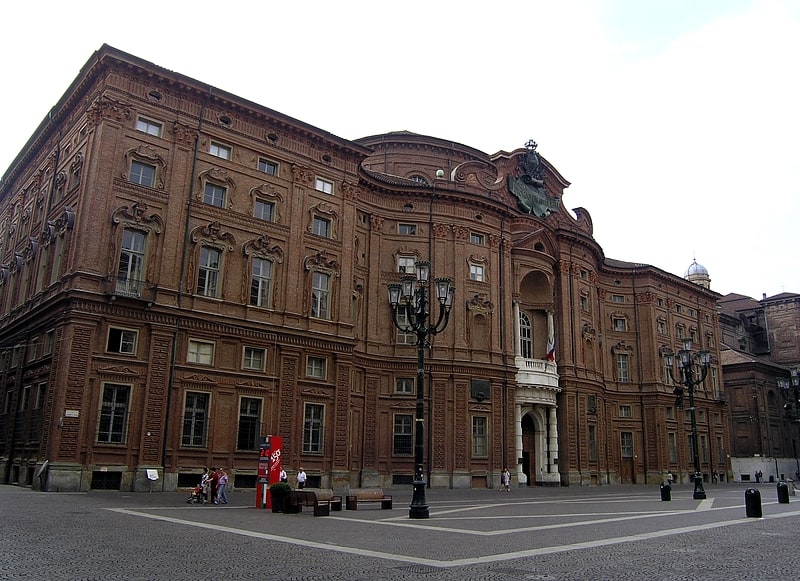
Ornate Baroque palace and museum. Palazzo Carignano is a historical building in the centre of Turin, Italy, which houses the Museum of the Risorgimento. It was a private residence of the Princes of Carignano, after whom it is named. Its rounded façade is different from other façades of the same structure. It is located on the Via Accademia delle Scienze.[11]
Address: Piazza Carignano, 10123 Torino (Circoscrizione 1)
Museo Nazionale dell'Automobile
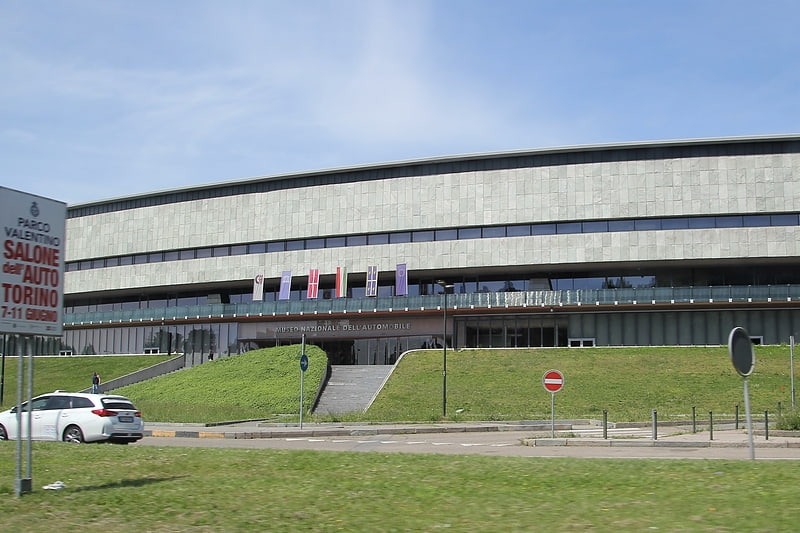
Also known as: Museo dell'automobile di Torino
Museum in Turin, Italy. The Museo Nazionale dell'Automobile, founded by Carlo Biscaretti di Ruffia, is an automobile museum in Turin, northern Italy. The museum has a collection of almost 200 cars among eighty automobile brands representing eight countries. The museum is situated in a building dating from 1960, and it has three floors. After restructuring in 2011 the museum is open again, and its exhibition area has been expanded from 11,000 square metres to 19,000 square metres. The museum also has its own library, documentation centre, bookshop and auditorium.[12]
Address: Corso Unità d'Italia, 40, 10126 Torino (Circoscrizione 9)
Juventus Museum
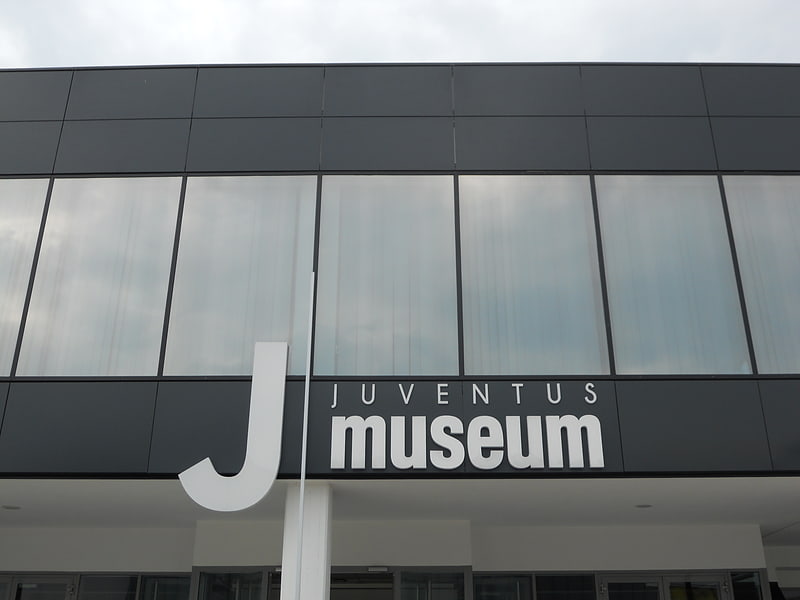
The Juventus Museum, called the J-Museum, is a sports museum dedicated to the most decorated football club in Italy, Juventus F.C. The museum is part of a complex surrounding Juventus Stadium; it is entirely bilingual in Italian and English, and opened in 2012, the 115th anniversary of the club, by club president Andrea Agnelli and museum chairman Paolo Gamberti.
The J-Museum documents the history of Juventus, football in Turin, and the national football team, through the use of modern technologies, a collection of memorabilia, photos, institutional documents and football equipment used by historical club players, as well as the trophies won by Juventus and the women's team.[13]
Juventus Stadium

Also known as: Allianz Stadium
Stadium in Turin, Italy. Juventus Stadium, known for sponsorship reasons as the Allianz Stadium since July 2017, sometimes simply known in Italy as the Stadium, is an all-seater football stadium in the Vallette borough of Turin, Italy, and the home of Juventus F.C. The stadium was built on the site of its former ground, the Stadio delle Alpi in the latter 2000s, and is the first club-owned football modern venue in the country as well as one of the only four stadiums accredited with the UEFA Category 4, which have the highest technical level in the confederation's Stadium Infrastructure Regulations, alongside the San Siro, the Stadio Olimpico di Roma and the Stadio Olimpico Grande Torino. It was opened at the start of the 2011–12 season and, with 41,507 spectators, it is the sixth largest football stadium in Italy by seating capacity, as well the first in Piedmont.
Juventus played the first match in the stadium on 8 September 2011 against the world's oldest professional football club Notts County, in a friendly which ended 1–1; Luca Toni scored the first goal. The first competitive match was against Parma three days later, where Stephan Lichtsteiner scored the stadium's first competitive goal in the 16th minute. Juventus only lost three of their first 100 league matches at the Juventus Stadium.
The stadium hosted the 2014 UEFA Europa League Final and the 2021 UEFA Nations League Finals. Also, it will host the 2022 UEFA Women's Champions League Final. In its area there are some other structures related with the club such as the J-Museum, the J-Medical and a concept store, as well as a shopping center.[14]
Address: Turin, Corso Gaetano Scirea 50, 10151
Castello del Valentino

Building in Turin, Italy. The Valentino Castle is a historic building in the northwestern Italian city of Turin. It is located in Parco del Valentino, and is the seat of the Architecture Faculty of the Polytechnic University of Turin. It is one of the Residences of the Royal House of Savoy included in the list of UNESCO World Heritage Sites in 1997.[15]
Address: Viale Mattioli Pier Andrea, 39, 10125 Torino (Circoscrizione 8)
Parco del Valentino

Park in Turin, Italy. Parco del Valentino is a popular public park in Turin, Italy. It is located along the west bank of the Po river. It covers an area of 500,000m², which makes it Turin's second largest park.[16]
Address: Corso Massimo d'Azeglio, 10125 Torino (Circoscrizione 8)
Palazzo Chiablese

Bed & breakfast in Turin, Italy. The Palazzo Chiablese is a wing of the Royal Palace of Turin, in Northwest Italy.
It was the residence of the Duke of Chablais first and then of Carlo Felice, King of Sardinia, and Ferdinando, Duke of Genoa. Today it is home to a cultural collection honouring the history of Piedmont. It is open to the public Wednesday, Thursday, Friday from 4 pm to 8pm and during press conferences, cultural events, concerts.[17]
Address: Piazza San Giovanni 2, 10122 Turin (Circoscrizione 1)
Civic Gallery of Modern and Contemporary Art
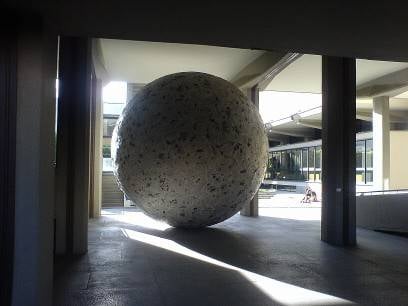
Art gallery in Turin, Italy. The Turin Civic Gallery of Modern and Contemporary Art is an art gallery in Turin, Italy, founded in 1891-1895 and located in 31 via Magenta. With the MAO, Palazzo Madama e Casaforte degli Acaja, the Borgo and the Rocca medioevali, it forms part of the Fondazione Torino Musei. The lower rooms house important reviews and a large collection of video art.
It houses the city's permanent collections of 19th and 20th century art, which consist of over 47,000 paintings, sculptures, art installations and pieces of video art. Artists represented include Antonio Canova, Giovanni Fattori, Giuseppe Pellizza da Volpedo, Antonio Mancini, Giacomo Balla, Paul Klee, Amedeo Modigliani, Pablo Picasso, Andy Warhol, Giorgio de Chirico, Lucio Fontana, Nino Franchina and Domenico Valinotti.[18]
Address: Via Magenta, 31, 10128 Torino (Circoscrizione 1)
Turin Cathedral
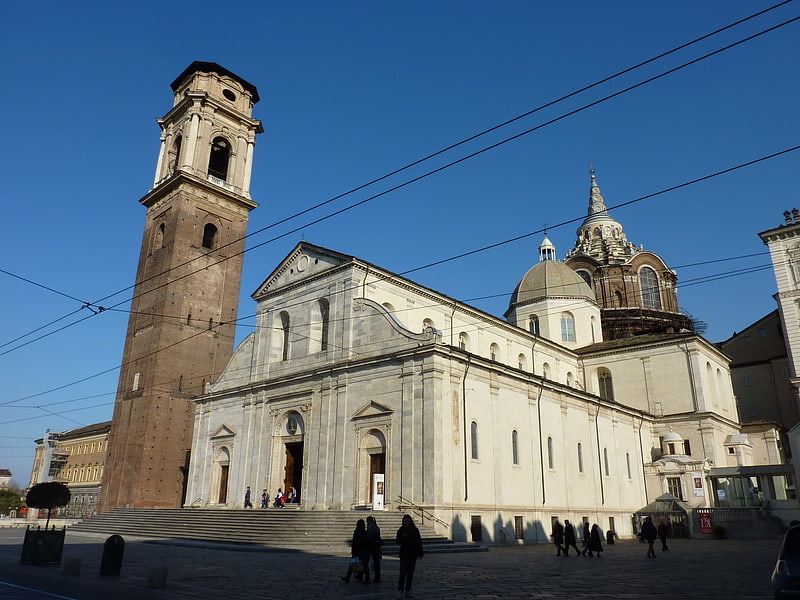
Also known as: Duomo di Torino
Historic 15th-century cathedral. Turin Cathedral is a Roman Catholic cathedral in Turin, northern Italy. Dedicated to Saint John the Baptist. It is the seat of the Archbishops of Turin.
It was built during 1491–1498, adjacent to a bell tower which had been built in 1470. Designed by Guarino Guarini, the Chapel of the Holy Shroud (the current location of the Shroud of Turin) was added to the structure in 1668–1694.[19]
Address: Piazza San Giovanni, 10122 Torino (Circoscrizione 1)
Gran Madre
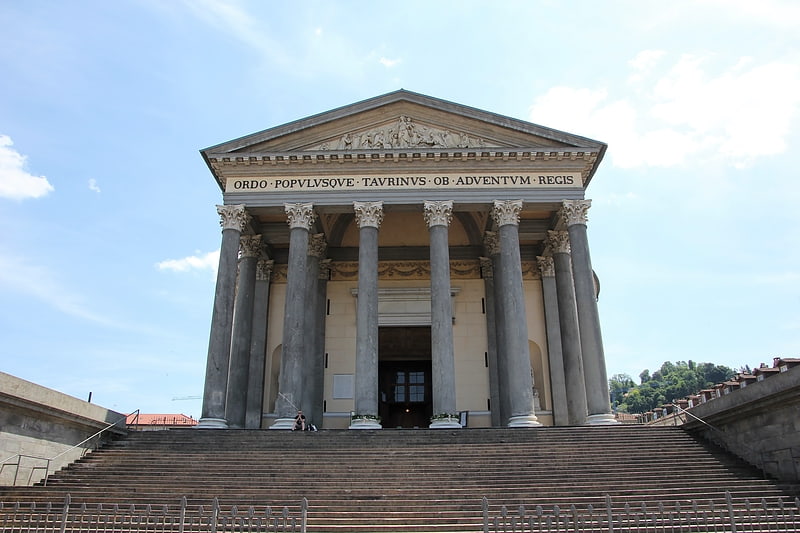
Historic neoclassical Catholic church. The church of Gran Madre di Dio is a Neoclassic-style church located on the western bank of the Po River, facing the Ponte Vittorio Emanuele I leading into Piazza Vittorio Veneto, Turin, region of Piedmont, Italy.[20]
Address: Piazza Gran Madre di Dio, 4, 10131 Torino (Circoscrizione 8)
Pala Alpitour
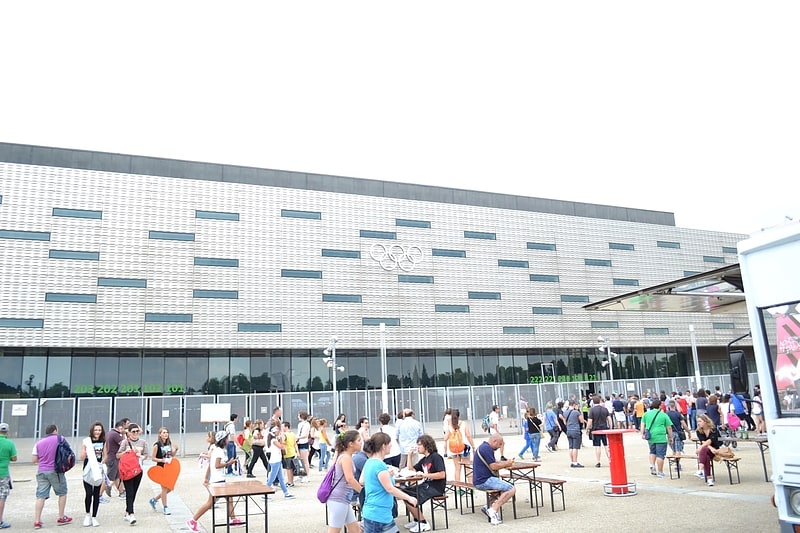
Also known as: Palasport Olimpico
Arena in Turin, Italy. Palasport Olimpico, officially operating with the sponsored name Pala Alpitour except during events prohibiting sponsorship names when it is usually known as simply PalaOlimpico, or occasionally PalaIsozaki after its architect, is a multi-purpose indoor arena located within Torino Olympic Park in the Santa Rita district of Turin, Italy. Opened in December 2005, the arena has a seating capacity of 12,350 when it is configured for ice hockey, and it is the largest indoor sporting arena in Italy.
The arena was originally built at a cost of €87 million, for the 2006 Winter Olympics, and along with the Torino Esposizioni, it hosted the ice hockey events. It is a few metres east of the Olympic Stadium. On 8 August 2014, the arena was renamed to Pala Alpitour following a sponsorship deal with Italian travel company Alpitour and in November 2020 becomes the fifth arena, the first in Italy, to be admitted as a member to the International Venue Alliance circuit.[21]
Address: Via Filadelfia 82, 10134 Turin (Circoscrizione 9)
Moncalieri Castle
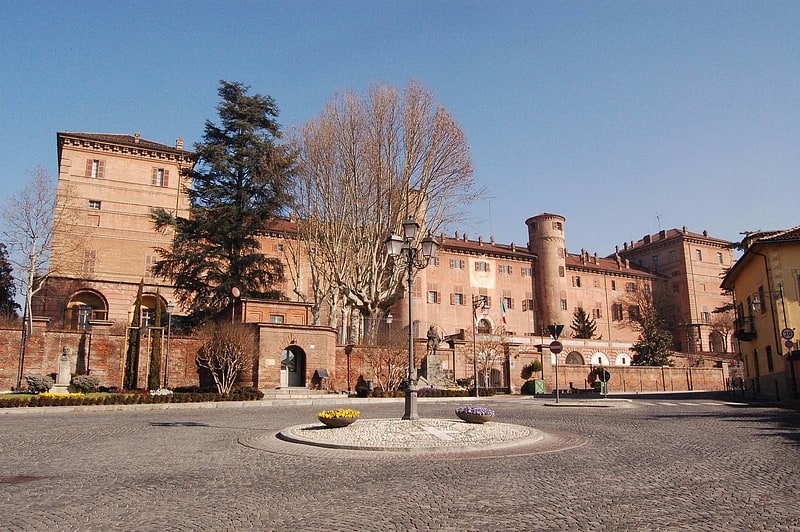
Also known as: Castello di Moncalieri
Palace in Moncalieri, Italy. The Castle of Moncalieri is a palace in Moncalieri, Piedmont, in northern Italy. It is one of the Residences of the Royal House of Savoy listed by UNESCO as World Heritage Sites in 1997.[22]
Address: Piazza Baden 4, 10024 Moncalieri
Pinacoteca Giovanni e Marella Agnelli

Art gallery in Turin, Italy. The Pinacoteca Giovanni e Marella Agnelli is an art gallery in Turin, Italy. It opened in 2002 on the top floor of the Lingotto complex, where a "scrigno" or 450 square-metre steel structure designed by Renzo Piano is raised 34 metres off the test track on the roof of the plant. Its style represents a crystal spaceship, referring back to the original building's futuristic style. Its permanent collection is a selection of paintings and sculptures from Gianni and Marella Agnelli's private collection such as Renoir's Blonde Bather and Manet's La Négresse as well as paintings by Matisse, Canaletto, Tiepolo, Canova, Piscasso and Modigliani. The gallery also puts on temporary modern art exhibitions.[23]
Address: Via Nizza, 230/103, 10126 Torino (Circoscrizione 9)
Galleria Sabauda
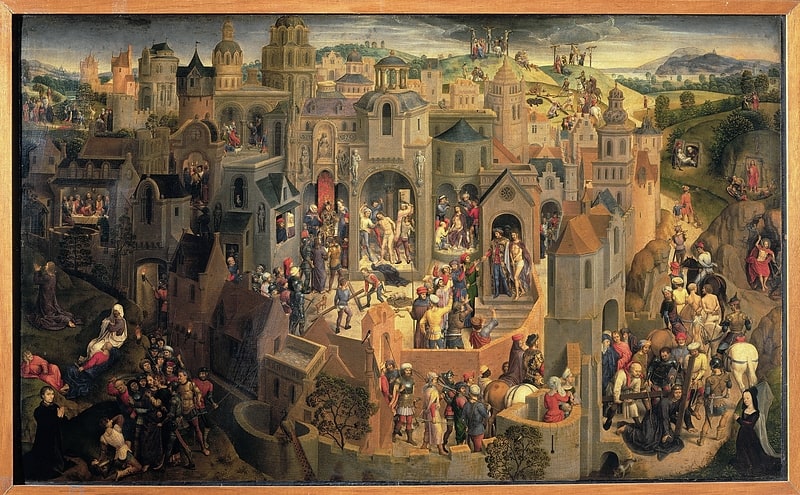
Spacious gallery of Italian and Dutch art. The Galleria Sabauda is an art collection in the Italian city of Turin, which contains the royal art collections amassed by the House of Savoy over the centuries. It is located on Via XX Settembre, 86.
The museum, whose first directors were Roberto and Massimo d'Azeglio, unites the art collection of Eugene of Savoy, acquired after his death by his cousin, the king of Sardinia, with the works from the Royal Palace of Turin, the picture gallery of the Savoy-Carignano, and the artworks from the Palazzo Durazzo in Genoa, acquired in 1824.
On October 2, 1832 (his birthday), King Charles Albert of Savoy inaugurated the royal gallery at the Palazzo Madama, containing 365 paintings. In 1865, Massimo d'Azeglio had the collection transferred to Guarino Guarini's Palazzo dell'Accademia delle Scienze (1679) where it stood until 2012, before it was moved to the current location.
On December 4, 2014, at the presence of the Italian Minister of Culture, the "Manica Nuova" of Palazzo Reale (New Wing of the Royal Palace) was official opened. The collection has now found its final place to be exhibited. The gallery is based on a brand new museum project conceived and developed by the superintendent Edith Gabrielli (for the scientific part) together with Studio Albini Associati (staging). The lighting is by CastagnaRavelli Studio, based in Milan; graphics are by Noorda Design.[24]
Equestrian monument of Emmanuel Philibert
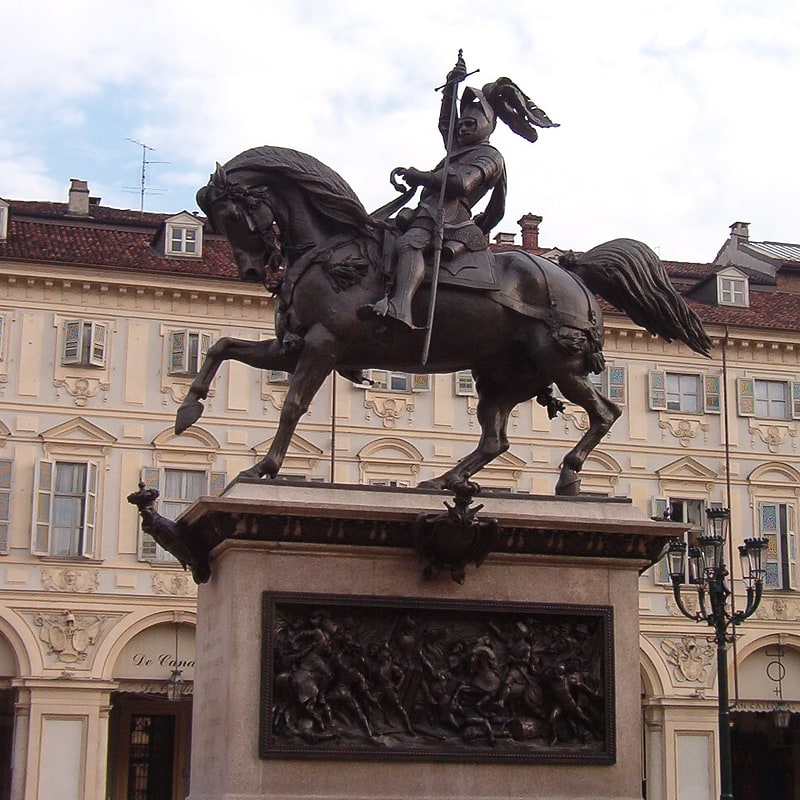
Also known as: Monumento a Emanuele Filiberto di Savoia
Monument in Turin, Italy. The Equestrian monument of Emmanuel Philibert, commonly known as Caval ëd bronz rises in the center of Piazza San Carlo in central Turin, in the Piedmont region of Italy.[25]
Chiesa di San Lorenzo
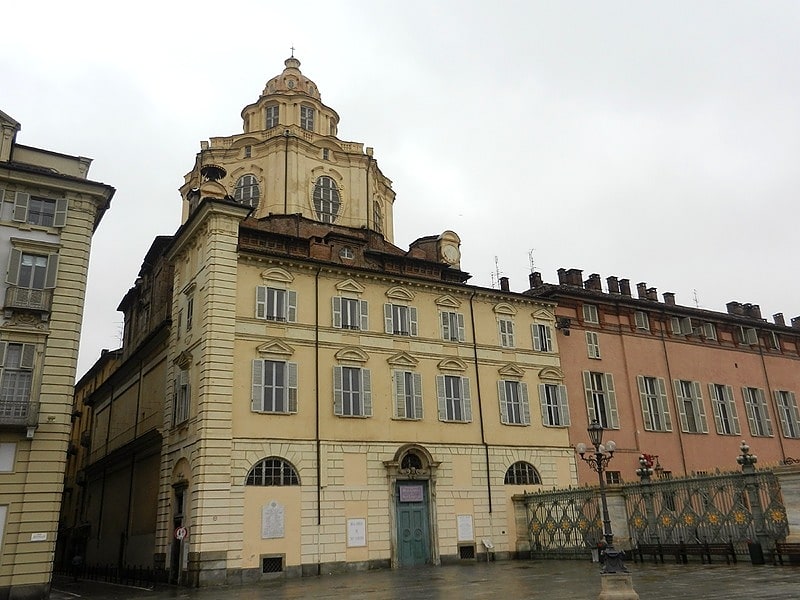
Church in Turin, Italy. San Lorenzo, also known as the Royal Church of Saint Lawrence, is a Baroque-style church in Turin, adjacent to the Royal Palace of Turin. The present church was designed and built by Guarino Guarini during 1668–1687.[26]
Address: Via Palazzo di Città, 4, 10122 Torino (Circoscrizione 1)
Museo Civico d'Arte Antica
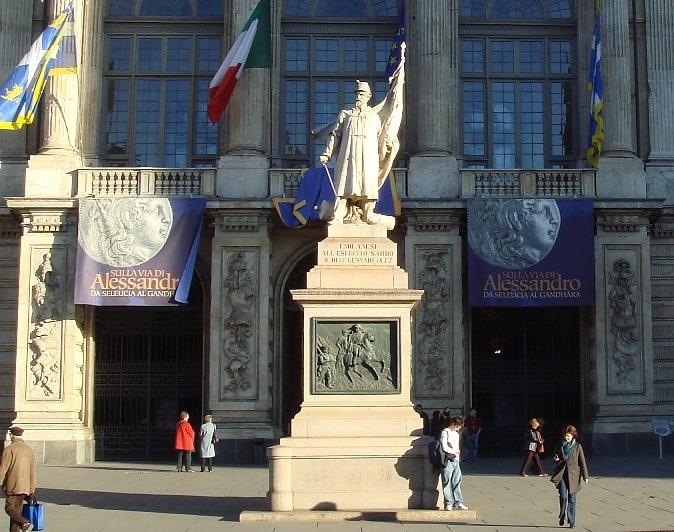
Also known as: Museo civico d'arte antica
Museum. The Museo Civico d'Arte Antica is an art museum located in the Palazzo Madama in Turin, Italy. It has a renowned collection of paintings from the medieval, Renaissance and Baroque periods. It reopened in 2006 after several years of restorations.[27]
Piazza San Carlo
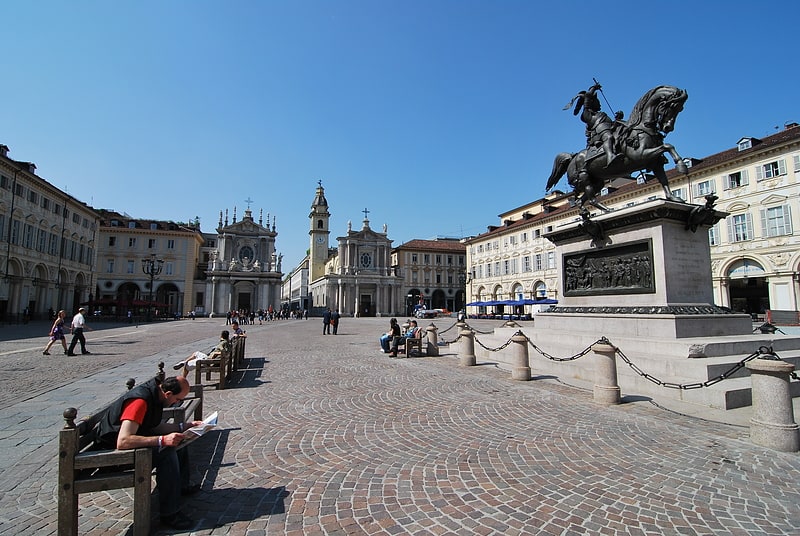
Tourist attraction in Turin, Italy. Piazza San Carlo, previously known as Piazza Reale, Piazza d'Armi, and Place Napoléon, is one of the main city squares in Turin, Italy. It was laid out in the 16th and 17th century and is an example of Baroque style.
The 1838 Equestrian monument of Emmanuel Philibert by Carlo Marochetti is located at the center of the square, which is surrounded by porticos designed by Carlo di Castellamonte around 1638. The twin churches of Santa Cristina and San Carlo Borromeo close the southern edge of the square.[28]
Address: Piazza San carlo, 10121 Turin (Circoscrizione 1)
Porta Palatina
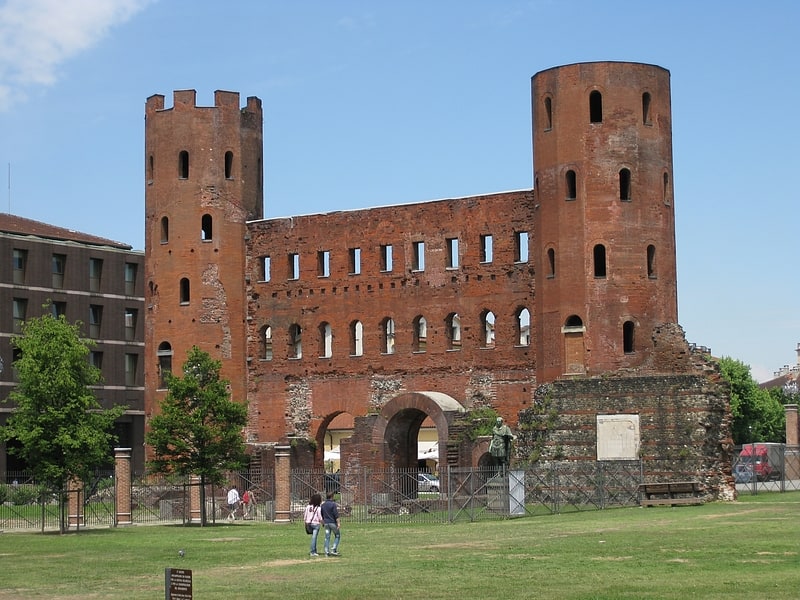
Historical landmark in Turin, Italy. The Palatine Gate is a Roman Age city gate located in Turin, Italy. The gate provided access through the city walls of Julia Augusta Taurinorum from the North side and, as a result, it constituted the Porta Principalis Dextra of the old town.
The Palatine Gate represents the primary archaeological evidence of the city's Roman phase, and is one of the best preserved 1st-century BC Roman gateways in the world. Together with the ancient theatre's remains, located a short distance away, it is part of the so-called Archaeological Park, opened in 2006.[29]
Address: Piazza Cesare Augusto 15, 10122 Turin (Circoscrizione 1)
Chapel of Merchants Church
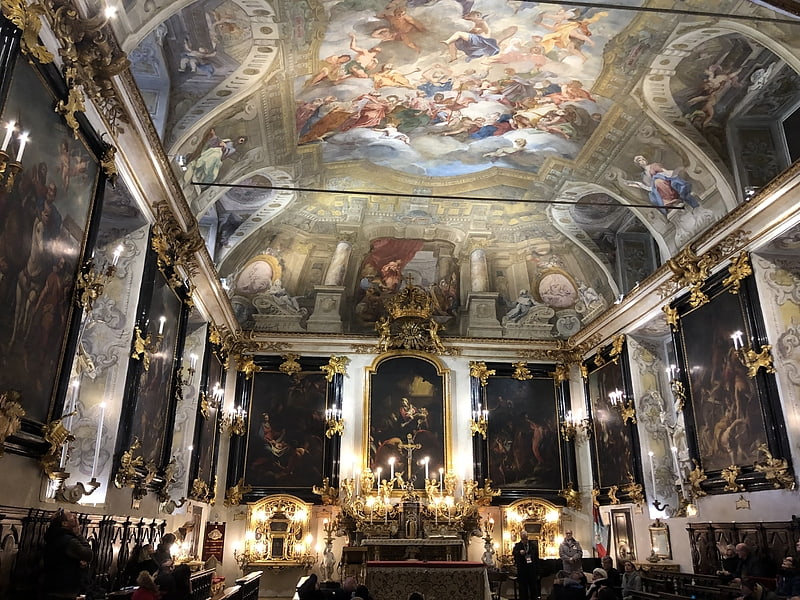
The cappella dei Mercanti, Negozianti e Banchieri, better known as cappella dei Mercanti, is a Catholic chapel in the historic city center of Turin, Italy.
The chapel, whose construction was authorized during the 16th century, was built at the end of the 1600s and most of the artwork it contains originated in the 1600 and 1700s, in the baroque style.
The sacristy hosts the Perpetual Calendar built by the engineering Giovanni Plana, a primitive computing machine.[30]
Address: Via Giuseppe Garibaldi 25, 70010 Turin (Circoscrizione 1)
Monte dei Cappuccini
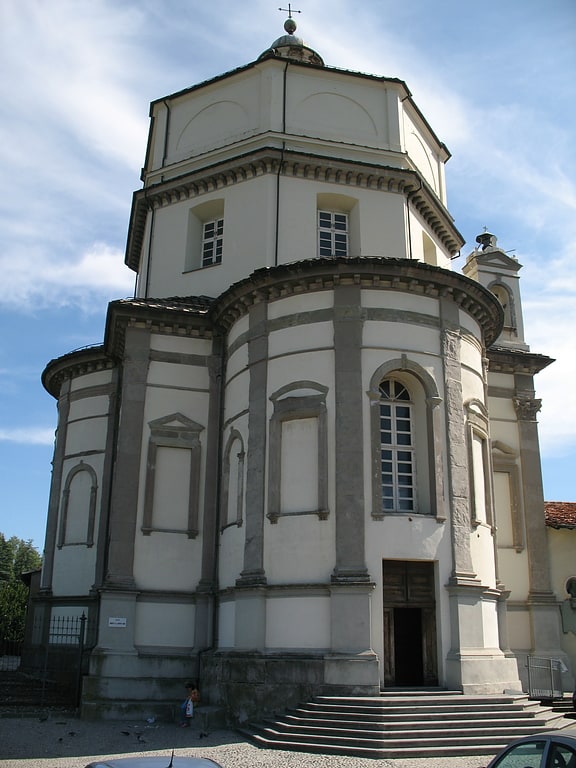
Church in Turin, Italy. The Church of Santa Maria al Monte dei Cappuccini is a late-Renaissance-style church on a hill overlooking the River Po just south of the bridge of Piazza Vittorio Veneto in Turin, Italy. It was built for the Capuchin Order; construction began in 1583, and was completed in 1656. The original design was by Ascanio Vitozzi, but was completed by the engineer Giacomo Soldati.
Under the altar of the left chapel lies the body of Saint Ignatius of Santhià. The high altar originally bore Orazio Gentileschi's Assumption of the Virgin, now in the Turin City Museum of Ancient Art.[31]
Address: Salita al C.A.I. Torino, 12, 10131 Torino (Circoscrizione 8)
Armeria Reale
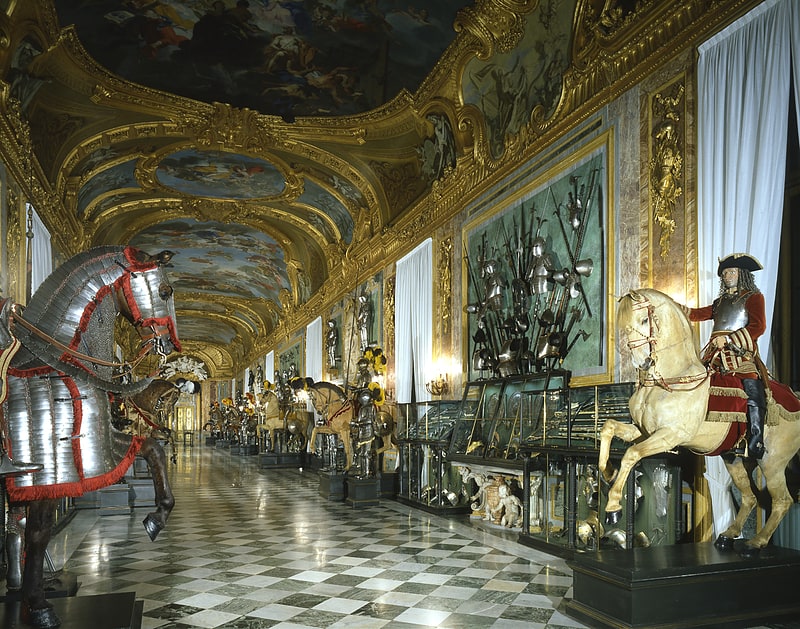
Museum in Turin, Italy. The Royal Armoury of Turin is one of the world’s most important collections of arms and armour, formed in Turin by the Savoy family. The museum is now part of the Musei Reali di Torino, the royal site that has unified the Royal Palace, the Sabauda Gallery, the Archaeological Museum, the Royal Library and the Armoury. The whole site has been included on the UNESCO World Heritage list since 1997.[32]
Address: Piazzetta Reale, 1, 10122 Torino (Circoscrizione 1)
Basilica of Our Lady Help of Christians

Also known as: Santuario di Maria Ausiliatrice
Basilica in Turin, Italy. The Basilica of Our Lady Help of Christians is a church in Turin, northern Italy. Originally part of the home for poor boys founded by John Bosco, it now contains the remains of Don Bosco, and 6,000 relics of other saints.[33]
Address: Via Maria Ausiliatrice 32, 10152 Turin (Circoscrizione 7)
Torre Intesa Sanpaolo
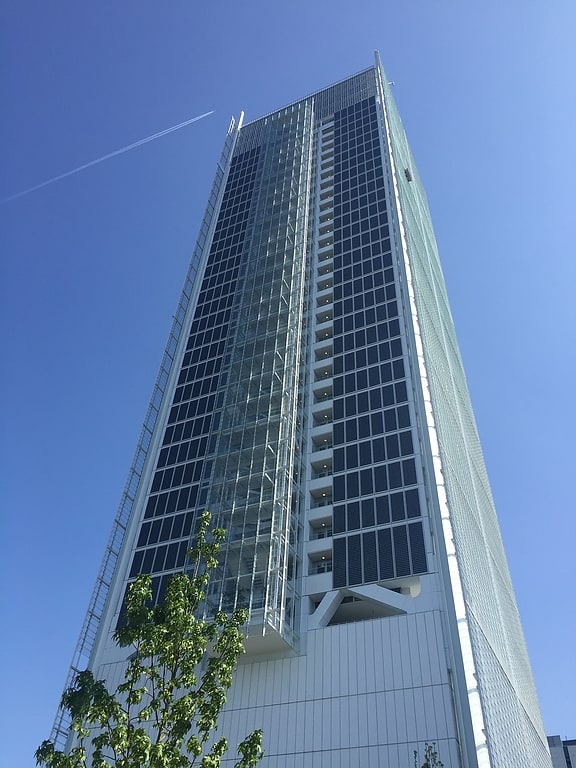
Also known as: Grattacielo Intesa Sanpaolo
Skyscraper in Turin, Italy. Grattacielo Intesa Sanpaolo in Turin, Italy is a skyscraper as well as the headquarters for the banking group Intesa Sanpaolo.[34]
Address: Corso Inghilterra, 3, 10138 Torino (Circoscrizione 3)
Centro Storico Fiat
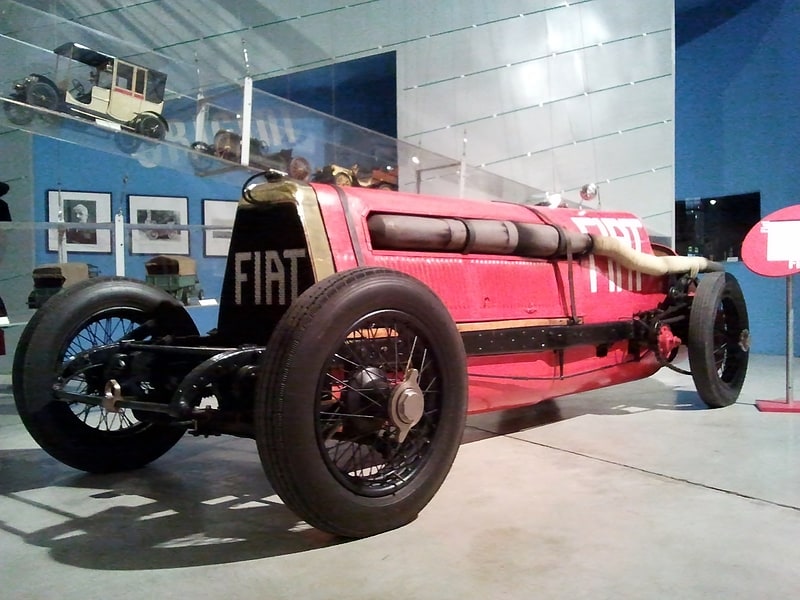
Also known as: Fiat SB4 Eldridge "Mefistofele"
The Fiat Mephistopheles is a one-off racing car created by Ernest A.D. Eldridge in 1923 by combining a Fiat racing car chassis and Fiat aeroplane engine. The name is from the demon of the same name. The name alluded to the infernal noise emitted from the unmuffled engine, and it was "baptised" by the Frenchmen.
Eldridge broke the World Land Speed Record on 12 July 1924 with the Mephistopheles, by driving at 234.98 km/h (146.0 mph) in Arpajon, France. The last car to set a land speed record on a public road.
The Mephistopheles was created by combining the chassis of the 1908 Fiat SB4 with a 6-cylinder, 21.7 litre (21706 cc) Fiat A.12 aeroplane engine producing 320 PS (235 kW; 316 bhp).
Mephistopheles was restored over 5 years, with another example of the same engine, and returned in 2011 with a display at the Goodwood Festival of Speed.[35]
Address: Via Gabriele Chiabrera, 20, 10126 Torino (Circoscrizione 8)